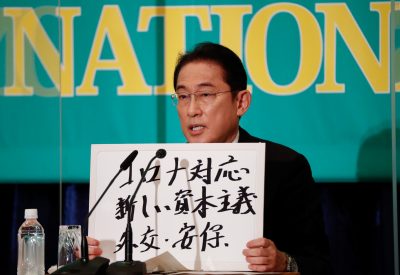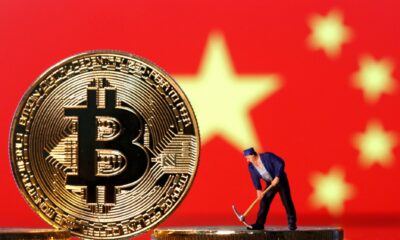Trade
Revisiting Japan’s comprehensive security strategy

Author: Tomohiko Satake, NIDS
Economic security, or keizai anpo, dominates the current Japanese strategic debate. Since 2019, the Japanese government has rapidly put in place new positions, organisations and bills related to economic security. According to Takayuki Kobayashi, Japan’s newly appointed minister for economic security, the term refers to securing ‘the Japanese state and national interest through economic measures’.
To achieve this objective, the Japanese parliament passed the Economic Security Promotion Act in 2022 to strengthen supply chain resilience, protect critical infrastructure, develop emerging technologies and prevent technology outflow. Japan’s new national security strategy — to be published by the end of 2022 — will likely incorporate these elements.
It is not the first time that Japan has recognised the economy as an integral part of its security. In the mid-1970s, Japanese politicians, intellectuals and businesspeople began to discuss the need for ‘comprehensive security’ (sogo anzen hosho) that included economic, food and energy security.
A 1980 report published by an advisory board to the Masayoshi Ohira government (the Ohira Report) advocated a ‘comprehensive security strategy’ that promoted Japanese security by various measures in multiple domains. While the report never underestimated the importance of military roles, it acknowledged the importance of other areas — such as economic, food and energy security — and recommended that Japan should enhance its security by coordinating policies across different areas and means.
The report reflected dynamic changes occurring in the international security environment after the early 1970s. The 1973 and 1978 oil shocks and high inflation led Tokyo to recognise that security could be jeopardised by non-military threats. To secure energy resources, it became imperative to review Japan’s overdependence on the Middle East and diversify its energy supply chains.
The Ohira Report also addressed the decline of US primacy and Japan’s growing desire for autonomous economic growth. With ‘the termination of clear American supremacy in both military and economic spheres,’ the report argued the world would enter an era of ‘peace maintained by shared responsibilities’. In such an environment, Japan should enhance its self-help efforts and contribute to the strengthening and the maintenance of the system.
The evolution of comprehensive security also reflects deeper changes in the nature of power politics during the 1970s. As Hiroshi Nakanishi points out, ‘the diversification and the complication of power politics’ promoted the multi-polarisation of international relations. As demonstrated by the US defeat in the Vietnam War, economic relations and psychological factors came to play an important role in power politics alongside military capability.
According to Nakanishi, these diversified and complex power politics also blurred the boundaries between ‘high politics’ associated with ideology, governance and military strategy, and ‘low politics’ concerned with the economy, energy supply and social affairs. In an environment characterised by what Joseph Nye and Robert Keohane termed ‘complex interdependence’, Japan was forced to adopt a more autonomous and comprehensive foreign security posture that could deal with a broader range of challenges.
The conditions identified above — Japan’s energy crisis, the decline of US primacy and the complication and diversification of power politics — have become even more prominent in today’s security environment.
During the 1970s and 1980s, the Soviet Union’s GDP was less than 25 per cent of US GDP. In 2022, China’s GDP amounts to nearly 75 per cent of US GDP. After the 1972 Sino–US Rapprochement, Washington was able to exploit the Sino–Soviet conflict and maintain a pivotal position. Today, however, China is increasingly aligned with Russia, challenging the US-led order.
The rise of the emerging states, the development of military and information technology and the promotion of interdependence has created a highly diversified and more complex security environment compared to with the 1970s. Russia’s invasion of Ukraine and its nuclear brinkmanship has revealed that traditional power politics have not become a thing of the past. At the same time, Ukraine’s surprising resistance against Russia suggests how non-military or non-kinetic factors, such as national morale, information warfare and cyber defence, play an increasingly important role in…
Trade
Self-Reliance and Openness: Core Principles of China’s Third Plenary Session

The Third Plenum communique from the CCP indicates a prioritization of stability and compromise in response to China’s economic challenges. It highlights the concept of Chinese-style modernization and establishes political guidelines for balancing regulation and market forces.
The CCP’s Third Plenum communique signals a focus on stability and compromise in the face of China’s economic challenges. It emphasises Chinese-style modernisation and sets political directions for balancing regulation and market forces. While not as groundbreaking as previous plenums, it acknowledges the importance of market mechanisms and technological self-reliance, aiming to address issues like high youth unemployment and private sector uncertainty. The communique seeks to navigate the complexities of global competition and domestic innovation, potentially reshaping global supply chains and trade dynamics. Overall, it presents a pragmatic blueprint for China’s economic future.
Source : Self-reliance and openness central pillars of China’s Third Plenum | East Asia Forum
Trade
Trade Prevails Over Political Persuasions in China-Germany Relations

China and Germany maintain a strong bilateral relationship, rooted in economic cooperation despite ideological differences. Recent visits and agreements focus on expanding trade and addressing mutual concerns, navigating challenges while nurturing ties.
Evolving Bilateral Ties
China and Germany share a strong bilateral relationship, rooted in history since 1972. This connection has seen moments of cooperation intertwined with periods of tension. German Chancellor Olaf Scholz’s April 2024 visit underscores Germany’s commitment to fostering this partnership, reflecting a mutual interest in maintaining economic ties despite ideological differences.
Economic Pragmatism
As the second and third largest global economies, China and Germany’s economic interdependence is crucial. Germany emerged as China’s primary trading partner in 2023, with trade values reaching €254.4 billion (US$280 billion). In response to global scrutiny, Germany has taken a balanced approach, emphasizing economic stability over political discord. This was evident during Scholz’s prior visit in November 2022, where his diplomatic tone contrasted with broader EU sentiments.
Facing Challenges Together
Despite increasing public skepticism in Germany regarding China’s global influence and human rights issues, both nations continue to seek common ground. Their October 2023 Joint Statement highlights intentions to pursue cooperation in areas like carbon neutrality and open markets. To navigate these complex terrains, Germany can utilize its institutional frameworks to enhance dialogue, while also considering supply chain diversification to reduce dependency on China. The intertwining nature of their economies suggests that, despite challenges, both countries will continue to prioritize their substantial trade relations.
Source : Trade trumps political persuasions in China–Germany relations
Trade
Fixing fragmentation in the settlement of international trade disputes

Fragmentation in global trade due to the lack of development in multilateral trade rules at the WTO has led to an increase in FTAs. The Appellate Body impasse has further exacerbated fragmentation, requiring a multilateral approach for reform.
Fragmentation in Global Trade
Fragmentation in global trade is not new. With the slow development of multilateral trade rules at the World Trade Organization (WTO), governments have turned to free trade agreements (FTAs). As of 2023, almost 600 bilateral and regional trade agreements have been notified to the WTO, leading to growing fragmentation in trade rules, business activities, and international relations. But until recently, trade dispute settlements have predominantly remained within the WTO.
Challenges with WTO Dispute Settlement
The demise of the Appellate Body increased fragmentation in both the interpretation and enforcement of trade law. A small number of WTO Members created the Multi-Party Interim Appeal Arbitration Arrangement (MPIA) as a temporary solution, but in its current form, it cannot properly address fragmentation. Since its creation in 2020, the MPIA has only attracted 26 parties, and its rulings have not been consistent with previous decisions made by the Appellate Body, rendering WTO case law increasingly fragmented.
The Path Forward for Global Trade
Maintaining the integrity and predictability of the global trading system while reducing fragmentation requires restoring the WTO’s authority. At the 12th WTO Ministerial Conference in 2022, governments agreed to re-establish a functional dispute settlement system by 2024. Reaching a consensus will be difficult, and negotiations will take time. A critical mass-based, open plurilateral approach provides a viable alternative way to reform the appellate mechanism, as WTO Members are committed to reforming the dispute settlement system.
Source : Fixing fragmentation in the settlement of international trade disputes






